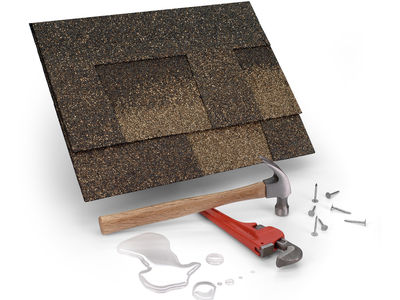
As specialists in “hard to find leaks”, we here at Precision Roof Crafters have found that there are two absolutes:
- A mysterious leak always occurs when it’s least convenient for home owners.
- Leaks never seem to take a direct path from their source!
Annoying as they are, when you spot a leak, it’s important to have it taken care of right away! Their effects can linger for months, sometimes years later bringing mold and structural damage to the inside of your home.
Locating the source of a roof leak takes some detective work. Sometimes a roof leak is not the result of one specific problem, but rather, several issues! But, we’ve made a helpful list of the most likely suspect areas for roof leaks!
The Shingle Field
Got an older roof? It could be that the leak is somewhere in the wide expanse of your shingles. If your roof is asphalt you can probably climb up there (safely, mind you!) and have a look. If you have concrete or clay tile as many homes in the Houston area do, those materials, along with slate, can be unwieldy. It’s possible to crack roofing materials just by walking around on it. If you have regular shingles, here are some items to look for as a leak source: cracking and missing colored granules. It’s also possible that a nail has backed its way out of the roof sheathing. Start at one corner of the roof and look things over in an organized path to find the culprit.
Down In The Valley
The place where two roof planes intersect is called the valley. Oftentimes your roof system will have metal flashing or rolled roofing to mesh those area together. Other roofs lace the shingles together. If the shingles are not trimmed properly, it’s possible for rainwater to travel along the chiseled point, under the shingle and into your house.
Step Wall Flashings
This is where a roof rises along a vertical wall, and the seam is protected by flashings. It’s important to look for holes or rust in these flashings. That could be the source of your leak.
Head Wall Flashings
Metal flashings are often installed where the roof stops at a vertical wall. This is to help rain stream down the wall away from where the shingles meet the wall. It is important that the flashing should extend over the shingles by at least three inches. If the wall is masonry, like brick or stone, the flashing has to bend and extend one inch into a mortar joint. A good indication that someone might have tried to patch a leak in this area before is if you see tar, caulk or roofing cement.
Chimneys
Chimneys often have four types of flashings, all properly installed, or you’ve got a leak! Just a hairline crack above the flashing can allow for streams of water to flow behind the flashings. Signs of an earlier repair might include soldered corners or caulk.
Plumbing Vent Flashings
Plumbers like rubber, so many times when installing plumbing vents, they’ll use a rubber seal with an aluminum flashing. Trouble is, that rubber seal deteriorates in hot sun and pounding rain is as little as ten years! Look for cracked rubber around the plumbing pipe. The bottom half of the flashing should cover the shingles with the flashing exposed.
B-Vent Flashings
The only difference between B-Vents and Plumbing Flashings are that they occasionally have a metal storm cover that fits tightly around the vertical pipe that exits the roof. These storm collars can create leaks if they jar loose through time and the house settling.
Wind-Driven Rain
You could have the best installed roof in town, but whipping wind can ruin everything, particularly if wind drives rainwater up and under your roofing materials. Roofing cement under shingles on the edge of the roof that faces the wind can help alleviate this problem. Trouble is, while storm systems travel west to east, thunderstorms contain winds that whip in every direction, so while it may be a good candidate for finding a leak source, prevention may be a moot point.
6 Leaks That Aren’t from the Roof at All
If you have a leak in a room but there’s an attic between that room and the roof, it’s possible that the REAL culprit is attic condensation, caused by high humidity. When inspecting your attic, look for wetness on the roof sheathing. Also check for any damage or nests from critters. They can gnaw their way in and when rain follows, that spells trouble. If your AC unit or any plumbing devices are in the attic, check them for leaks. Check the inside surface of the chimney for discoloration or plaster bubbles – again, not technically a roof problem. And finally, if siding is missing above a roof, it could cause water to enter behind the head flashings, causing leaks and possible mold infestation.
Sussing out the source of a leak can be time-consuming and frustrating if you’re not really sure what you’re looking for or where to look. Our company specializes in hard-to-find leaks, so count on professional advice from Precision Roof Crafters.


